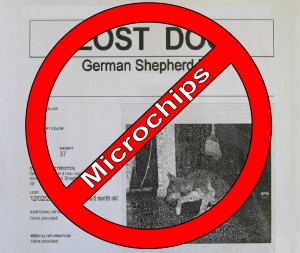Technician Talk
Spay/Neuter Awareness Month
This year at Blandon Family Veterinary Practice, we hope you “LEAP” at the opportunity to have your pet spayed or neutered! 2016 is a leap year and February is also Spay/Neuter Awareness Month! We all know that spaying and neutering can help in the battle of population control and unwanted litters, but fixing your pet also provides multiple health benefits. Pets that are spayed or neutered can live healthier lives than their intact furry friends for many reasons. Fixing you pet can greatly reduce chances of certain reproductive diseases such as mammary cancer. It also eliminates the possibility of a pyometra (a deadly infection in the uterus) and ovarian and testicular cancers. Having your pet fixed can help avoid behavioral issues such as marking, aggression and escaping from the house to find a mate. They can detect another animal in heat miles away! Take the leap to a healthier future for your pet and get them spayed or neutered! For more information on the procedure or to schedule an appointment, contact the staff at the office today!
"Buckle up, pup!" - Travel Safety
January 2nd is recognized as Pet Travel Safety Day, but travel safety for our furry critters is something to be mindful of all year long. Simple habits will improve pet and owner safety during travel. Keeping the driver from being distracted while operating the vehicle keeps everyone safer. We already have many distractions such as our phones, kids, and the radio. A pet should not add to that list. Not all pets like car trips and sometimes a stressed pet can affect our ability to stay focused when we know that they are anxious. If you have a pet that gets car sick, try not feeding your pet prior to travel. Place a blanket down to protect your seat if your pet vomits during the trip (and don’t forget to bring a fresh blanket for the drive home!). Taking short trips, even around the block, over time might help decrease the anxiety associated with a longer car trip when necessary. Take your pet to different locations, such as a park, to break the association with the car and locations they may not be so thrilled about (like a groomer or the veterinary office). Also try having a passenger along for the trip to help calm your pet rather than trying to comfort your pet and drive at the same time.
Restraining your pet in the vehicle will greatly increase safety for all. Just like us, pets can be severely injured or even killed during a collision. Unfortunately, they can also act as a dangerous projectile, flying through the air, breaking through windshields, being thrown from the car and even injuring their human companions if not properly restrained in the vehicle. An unrestrained pet can cause an accident by climbing and jumping around in the car or on the driver. For cats, although they may protest during your attempt to pack them up, should always travel in a carrier. Unrestrained cats might follow their instincts to flee and hide, only to crawl under seats, under the foot pedals or even out the windows. This is an extreme hazard for everyone in the car and other vehicles on the road. Place carriers on the floor of the car rather than the seat. In the event of an accident, a carrier on the floor is less likely to be projected than on a seat. Dogs should not be placed in the front seat of the car, as there are greater chances of being propelled through the front windshield or being injured by deployed airbags. Appropriate harnesses should be placed on the dog and fastened to the seat. With all the variety of harnesses and car seats available for pets, it can be difficult to judge which are best at keeping your pet safe. The Center for Pet Safety is a non-profit research and advocacy organization that devotes its efforts to provide both consumer and pet safety. The organization has performed not only harness crash testing, but crate testing as well. You can watch the videos on their website, www.centerforpetsafety.org, as well as find the list of products that have and have not past the crash tests.
As much as you enjoy seeing your dog’s ears flapping in the wind with a big goofy smile on their face, it is in their best interest not to allow them to stick their head out the window. Not only does this give them opportunity to jump out of the vehicle, but pieces of debris can be kicked up by other vehicles, like rocks, dirt and pieces of metal and glass. All can cause serious injury to your dog’s face or eyes. Never allow your pets to travel uncontained in the bed of a pick-up truck. Not only is this very dangerous for obvious reasons, but it some places, it is also illegal. We hope that you will never find yourself in an accident with your furry companion, but if you do, having your pet properly restrained will greatly increase the safety for all passengers, furry or not.
Fire Safety for Your Pet
 One of the most devastating things that could happen to a home is a house fire. It can start and spread quickly, leaving massive damage in its wake. Being proactive to prevent house fires and having a fire safety plan in place for if a fire occurs can save your family and your pets.
One of the most devastating things that could happen to a home is a house fire. It can start and spread quickly, leaving massive damage in its wake. Being proactive to prevent house fires and having a fire safety plan in place for if a fire occurs can save your family and your pets.
Believe it or not, pets can be an accidental cause for house fires! Take time to pet proof hazard areas. Consider removing knobs from stoves and ranges when they are not in use. Dogs, especially, may jump up looking for food and unknowingly turn on these appliances. Consider also not burning candles in the home. Cats are prone to knocking things over, or a dog may bump in to a table where a candle is sitting and knock it over. LED candles are a great alternative if you want the lit candle ambiance in your home. Keep fire places screened off and inaccessible to pets. You’d be surprised how curious and close some pets may get to a fire.
With as many precautions as we take, we still cannot control all fire circumstances. In these cases, the best thing we can do is prepare. Include your pets as part of your family’s fire escape plan. First and foremost, it is important to have working smoke detectors on every floor of your home. Check that they are operating properly on a regular basis. An even safer option is to have a smoke detector that is connected to a home security system. If a smoke alarm is triggered while you are not home, the chances of your pet being rescued from a house fire are greater if the fire department can respond immediately. Know your pet’s normal hiding spots. During a fire, they will be frightened and confused and may seek the comfort of their favorite hiding spot in order to feel safe. Keep a window cling or sign that states how many pets and their descriptions in windows or doors. Knowing what animal they are looking for as well as how many are in the house will assist a firefighter if they need to search for your pets. These clings are available here at the office, as well as shelters and pet stores. For those who opt to confine pets to one room or a crate while you are not home, choose locations close to an entrance. Providing easier access to your pet will result in getting them out the house more quickly. Keep leashes and carriers easily accessible so you can grab your pet in a hurry. Again, your pet will be scared and may decide to run if not controlled. Once you have a fire safety plan in place, practice it with your family. Conduct fire drills at home that include your pets. Having a game plan before an emergency happens will improve the safety of both you and your pets.
Vacation with Fido - Part 3
After mapping out your road trip or booking your flight, check if the state or country to which you are traveling requires any specific health certificate documentation, special testing, quarantine periods, or certain treatments prior to your vacation. Microchipping might also be mandated either before entering. When traveling internationally, contact the destination country’s embassy to find the exact protocols and then set up the necessary appointments with us. Dr. Estelle is an “accredited” veterinarian, authorized by the USDA to examine your pet and sign the necessary documentation they may need for travel.
Last, but not least, once you get there Fido is going to want a nice comfy bed to crawl into at night. Although there are many pet-friendly hotels out there, it is important to contact the hotel directly and inquire about their policy. Even national chains may have varying policies at each individual hotel. There might be a limit to the weight of the pet, the number of pets and sometimes the breed of the pet allowed in the rooms. The hotels might also have various fees regarding pets in the room and regulations such as crating the dog when you are out of the room or not leaving the dog unattended at all.
Preparing in advance for travel and vacation will not only make your trip smooth, but will also help to keep your pet happy and healthy as well. Keeping up to date with vaccines and preventative anti-parasite products will keep your pet protected against common diseases and parasites during their travels. Knowing you have medication on hand if your pet gets nauseous in the car will make a happy car ride for you and Fido. When you have all your paperwork prepared, it makes for a quick and easy trip through customs on those international journeys. Then all that is left to do is sit, stay and enjoy!
Vacation with Fido - Part 2
Now that you have the basics covered, let’s plan your vacation. For many, travelling by car is the easiest and most cost effective way to travel. With many dogs, simply asking, “do you want to go for a ride?” is all the encouragement they need to throw themselves in the backseat with their head positioned perfectly out the window. However, some dogs do not tolerate car rides. Whether it is an anxiety issue or a matter of motion sickness, both issues can be medically assisted. Antihistamines are an option, as well as a fantastic prescription medication to combat motion sickness in dogs. We are able guide you in the best options for your pet, as well as provide medications for such products. It is also a wise idea to map out area rest stops along your route in case Fido needs a pit stop. It is much safer to leash walk your pet in a designated rest stop away from the highway and moving vehicles that may startle your pet.
When your destination requires traveling a distance that is more easily accessible by plane, there are many steps that may be required before your trip. Most airlines require that a health certificate be presented at the time of travel. The time frame may vary between airlines and also the destination. Although airlines may allow pets of a certain size and weight limit to fly in the cabin, they may limit that number depending on the size of the plane and capacity. For those pets that fly as cargo, there may be times where the temperature may reach unsafe levels for the pet and the airlines may not accept pets to travel during those periods. To get the most accurate information and requirements, contact that the airline you will be using directly ahead of time so that you are not stuck in a bind.
Vacation with Fido - Part 1
If you have decided that Fido would like to see the world beyond your backyard and accompany you on vacation, there are many things to plan; how to get there, what preparations you need to make, where you stay once you get there. Planning in advance will help provide a smooth trip so that you and Fido can enjoy some time off together in a faraway land.
Take the time to be sure your pet is up to date with vaccines and healthy enough to travel. Although we recommend heartworm and a flea and tick preventative year round, it is especially important to have your pet on these products while traveling. Different regions of the country can potentially have a higher prevalence of heartworm, for example. Or other places, like beaches, may harbor hookworms. Parasites are souvenirs you do not want your pet to bring home with you. Bloodwork may be indicated before your departure to ensure your pet’s health. If your pet is on preventatives or prescription medications, be sure to take them with you in the original labelled container that was dispensed to you from your veterinarian. Even if you are only going for a weekend vacation, if a health problem occurs it will be helpful for an emergency veterinarian to have the name and strength of a medication so they can best treat your pet. When flying, it is required that medication be in a labelled container or it will be discarded. Also keep a copy of your pet’s health certificate and vaccination certificate with you. Some hotels, airlines and even campgrounds may ask you to present them.
Now that you and Fido are prepared, my next post will talk about planning your vacation. Stay tuned!
What is a Microchip and Should I Consider It for My Pet?
 I’m sure at some point, you have driven down a neighborhood street and seen a flier hanging on a telephone pole with a picture of a pet with the word “Missing” above it. If you participate in social media, you have probably seen the countless photos of pets that have gone missing flooding your screen. You can open up the newspaper in the pets section and find ads for lost or missing pets almost every single day. My heart breaks for these families. A part of their family has disappeared and every effort is being made to try and get them home. But what happens when they are found? Although tags and collars may offer identification, it is always a possibility that they managed to slip out of their collar, that tags fell off, or possibly did not even have one on in the first place. Even though Fluffy is an indoor only cat, or Fido is a loyal, well trained dog who always stays in the yard, accidents happen. Maybe you thought you closed the door on your way outside, but Fluffy decided to sneak through the crack. Perhaps Fido has had enough of that squirrel taunting him and finally decides to jump the fence and take chase. When they are found, a microchip is a great way to get Fluffy and Fido back home again.
I’m sure at some point, you have driven down a neighborhood street and seen a flier hanging on a telephone pole with a picture of a pet with the word “Missing” above it. If you participate in social media, you have probably seen the countless photos of pets that have gone missing flooding your screen. You can open up the newspaper in the pets section and find ads for lost or missing pets almost every single day. My heart breaks for these families. A part of their family has disappeared and every effort is being made to try and get them home. But what happens when they are found? Although tags and collars may offer identification, it is always a possibility that they managed to slip out of their collar, that tags fell off, or possibly did not even have one on in the first place. Even though Fluffy is an indoor only cat, or Fido is a loyal, well trained dog who always stays in the yard, accidents happen. Maybe you thought you closed the door on your way outside, but Fluffy decided to sneak through the crack. Perhaps Fido has had enough of that squirrel taunting him and finally decides to jump the fence and take chase. When they are found, a microchip is a great way to get Fluffy and Fido back home again.
When activated by a microchip reader, a pet’s microchip transmits a tiny frequency which is then read by the microchip reader. The reader provides a unique identification number that can be used to look up information that has been registered to that chip. It is important to know that the chip does not work as a GPS. In other words, the chip does not tell you where your pet is located when they escape, rather it only provides information as to how the person who read the chip may contact you when the pet is found and scanned. The chip itself is small, about the size of a grain of rice. The standard location for implantation is under the skin in the area between the shoulder blades. Although the size of the needle may look intimidating to us, but pets are brave and do not need to be anesthetized to have the chip implanted. The microchip does not require a battery to operate and is a permanent form of identification, functioning the entire life span of your pet.
Many veterinary practices will register your microchip information for you once the chip has been implanted. What that means is that your contact information (address, name, phone number, etc.) will be entered in a database should your pet ever need to have its chip scanned. However, it is your responsibility to keep your contact information current. The shelter can’t return Fido back home to you if your phone number or address is not correct. Keeping information up to date can be easily be completed by contacting the manufacturer of your pet’s microchip. Another perk to microchipping dogs is the availabilty of a lifetime dog license. In Pennsylvania there is a one-time fee for pets with microchips that saves you the worry of trying to remember to renew it every year.
Linda K. Lord, DVM, PhD, an assistant professor in the Department of Veterinary Preventive Medicine, at The Ohio State University published a study in 2008 that looked into the number of cats and dogs that entered shelters and were returned home with the aid of a microchip. The study showed some pretty impressive numbers. To summarize the results, the study (cited by Lord) found that 73% of stray animals that had been turned in to shelters, had owners that were able to be located. The study (cited by Lord) also found that dogs that were microchipped, compared to stray dogs that were not, had a return-to-owner rate that was 2.4 times higher. Cats that were microchipped were 21.4 times higher than those cats that were not. There have even been reports of family pets that had been missing for months and years, only to be found hundreds of miles away, and all thanks to a microchip. Situations (cited by Lord) such as incorrect phone numbers, owner’s not returning the shelters calls, unregistered chips and registered chip numbers not correlating to the manufacturer’s product were found to be the top reasons that pets with microchips were not able to be returned to their owners.
With those numbers, it is easy to see the benefits of micropchipping your pets. Although microchipping is a great form of permanent identification, it is always a good idea to keep a collar on your pet that has you contact information easily visible. A little microchip can make the difference if you will find your lost pet. It’s a decision you will have been glad you made if you ever find yourself in that position. If you are interested in getting your pets microchipped, please call our office where we could get you scheduled or answer any additional questions you may have.
Resource:
Lord, Linda K. DVM, PhD, Assistant Professor, Department of Veterinary Preventive Medicine, The Ohio State University. (2008). The Microchip World: Recent Advances and Options for Shelters and Veterinarians. The Ohio State University College of Veterinary Medicine The Indoor Pet Initiative. 3/31/2014, from http://indoorpet.osu.edu/veterinarians/microchip/index.cfm
Ear Cleaning 101
Routine ear cleanings can be an important part of your pet’s health. Some pets develop waxy ears more than others, and depending on their breed, can be predisposed to chronic ear infections. Keeping the ears clean can prevent infections and extra trips to the vet. Not to mention you’ll have a much happier furry friend! Cats and dogs have ear canals that are “L” shaped. Because of this, you cannot see the wax or debris that builds up deep in the deeper, horizontal portion of the ear canal. In order to clean this area, it is ideal to use an ear flush to break up any wax that may be building up and to allow that wax to surface out of the ear. Ear cleaners are available both over the counter and at our office. Despite its popularity as a common home remedy, we advise you to never hydrogen peroxide as an ear cleaner. That is because, after all the bubbling stops, it turns into water. Water is a predisposer for ear infections. We also favor genuine ear flushing products over any other home remedy formulas.
Once you have an appropriate ear cleaner, fill the ear canal up with the solution just until you see the cleaner starting to reach the opening of the canal. Trying to keep your pet from shaking their head is the hard part! Keeping the solution in the ear, massage the base of the ear to loosen or break up the wax and debris that may be lodged deep in the canal. Wipe the excess cleaner out using a cotton ball or gauze square. Using your finger, wipe down as far as your can reach down in to the ear canal to remove any remaining debris. Remember, because of the “L” shape of the canal, you finger will not reach deep enough to damage vital structures, such as the eardrum.
The frequency in which you clean your pet’s ears varies from pet to pet. We generally advise a flush to be done every two weeks. But certain breeds, such as cocker spaniels, labs, golden retrievers and other floppy eared dogs are more prone to ear infections. In these pets, a weekly cleaning may be needed. It is also important to know when cleanings alone aren’t enough and when a trip to the vet is warranted. Most infections are not from ear mites, so please don’t waste your money on over the counter mite medication. If you see your pet shaking their head more or scratching at their ears more frequently, these are two common symptoms of ear infections. Sometimes the inside of the ears can appear red and swollen, or your pet may act painful when looking into their ears. An infection can also emit a bad odor from the ears. In some cases your pet’s discomfort may even be great enough to lead them to hold their head tilted. If any of these symptoms occur, have your pet seen to check for an ear infection. If left untreated not only is an ear infection painful, but over time the ear canal can swell shut, trapping infection and making it much more difficult to treat. If you have additional questions or think your pet needs to be seen for ear issues, call the office where our staff will be happy to assist you!
He Did What On the Carpet?!
We have all witnessed it before, whether it be in our living rooms or in a silly online video; the infamous butt scooting. I have to admit, it is rather comical to see a dog (or yes, even a cat) spinning in circles on the floor or dragging themselves clear across the room. However, there is an actual reason for that behavior other than just for our amusement. Dogs and cats have glands that are located on either side of the anus that secrete a stinky material, much like that of a skunk. Ever wonder why dogs sniff each other to say hello? Although it is just plain stinky to us, that scent is unique to each animal. On a normal occurrence, each time an animal has a bowel movement, the glands are emptied. Or at least that is what’s supposed to happen. Sometimes the material, for one reason or another, will become too thick and can’t be expressed. As you can imagine, a full gland would become very uncomfortable. To try and express the glands, they will scoot or even lick at the area in attempts to empty the glands out. Excessive licking or scooting can create irritations or rashes on the skin. To make a bad situation worse, a gland can also become infected. The gland itself can keep building up infected material, and much like a balloon has a threshold before it burst, so does an anal gland. When this happens, it is called an anal gland abscess and this requires medical attention.
When a pet cannot express their own glands, the glands must be manually expressed for them. There is no way to know which pets will have problems and which ones will not. Some pets may need to have their glands manually expressed on a routine basis. There are pets that may have an infection once and never have one again. Other pets may never have an issue their entire lives. At any rate, if you see your pet scooting or licking, that is a pretty good indicator that something is bothering them. Schedule an appointment to have your pet checked out if you see any of these symptoms. Your pet, your carpet, and maybe even your nose will thank you.
Dental Health Season
We have once again decided to set aside both February and March to focus on dental health. Dental health greatly affects the overall health of our pets. Even though they are adept at hiding it, poor dental health can be very painful for our four-legged family members!
As our promotion for Dental Health Season, if your pet’s dental procedure is completed in the months of February and March; we are offering a free dental x-ray evaluation (a value of $80)! Since dentals are done under anesthesia, we will require that your pet has had a physical examination with us in the last year and has recent up-to-date bloodwork to evaluate their safety for the procedure.
Dr. Estelle is well trained and well experienced in veterinary dental techniques for pets. His own father and brother are dentists for people! Dr. Estelle’s passion for proper pet dental care has lead him to take specialized training seminars on pet dental care. At BFVP we have a dental x-ray machine and high quality digital equipment to evaluate your pet’s oral health. With these tools we can catch disease that might not be evident on the surface, yet still hurts your pet and affects their health.
Hundreds of times over pet owners tell us that their pet acts more like a puppy or kitten after a dental procedure. Please call us to learn more or to schedule an appointment today!
Mogwai and the Tick
A few weeks ago I walked by my bathroom to find my Persian, Mogwai, in one of his favorite spots, the bathroom sink. His majesty was patiently waiting for some mere human to turn on the faucet so he could drink the fresh streaming water rather than the stagnant stuff in his water bowl. While he is busy lapping up the water straight from the mouth of the faucet, I decided to take the opportunity to brush out his ridiculously thick, fluffy white hair. Though Mogwai is a beautiful cat, he is by no means clean or dainty. His fluffy white coat works as a great replacement for a feather duster as it attracts all kinds of things. That’s why I gave no second thought to the small black fleck of dirt that was crawling around in the jungle gym of hair. Crawling? Dirt doesn’t crawl! I took a closer look and saw eight legs waving at me. It was a deer tick! My indoor only, pure bred cat, who lives in the suburbs, in the cool month of October had a blood sucking parasite on him. Fortunately, I apply a flea and tick topical on him every month, including the colder months, just for this reason. Both I and my dogs stroll through my yard on daily basis, providing a perfect opportunity for one of those little guys to hitch a ride inside. With the colder months quickly approaching, the fleas and ticks want to come inside and out of the cold.
Despite the appearance the first few frosts that everyone deems the end of flea and tick season, these pests are still lurking around outside. We see patients come in to the office during the months of November and December who are still showing evidence of fleas and ticks. For this reason, we recommend flea and tick topical products year round for all pets. Even pets who never step outside your door can fall prey to the nuisance of flea and tick infestations (as I experienced first-hand!). One flea can produce up to 2,000 eggs in areas that are harder to clean such as your carpets, furniture, and if you spoil your pets like me, your bed! Once you discover fleas are sneaking a free meal from your pet, it can take at least 3 to 6 months to get things back under control again with the help of topical products. It is easier to play keep up rather than catch up. This can be achieved with an easy, once a month application of a topical. If you have questions about topical products, or other methods of flea and tick prevention, call the office to speak to the staff about how you can protect your pets from these creepy crawlers.
Helpful Information About Pet Insurance
This Dog is Going to Cost Me How Much?
How Pet Insurance Can Help With Unexpected Cost
Pets can bring happiness into any household. However, have you ever sat down and considered the cost you may incur over the years? The cost can be higher than you think because you want your pet to be healthy and do what is best for them. Pet insurance is a great option to help with those costs and making a better decision on what you can do for your pet.
There are several pet insurance companies for you to choose from. It is always a great idea to shop around for insurance plans before you commit to one company to make sure that you get the best coverage at the best price for your pet. Most pet insurance companies will not cover a pre-existing condition, so it would be most beneficial if you get an insurance policy early on in your pets’ life. There is also the benefit that it will be much less expensive per month then if you get a policy after your pet has already developed a medical problem.
Most insurance companies offer different policies and insurance packages to fit your budget. You can choose a policy that will cover everything from the yearly physical exam and vaccines to a routine surgery. Or you can get a policy that simply covers those unexpected emergencies that you may have to deal with at some point. Whichever policy or plan you may choose, it will help you to take another step in the right direction of taking the best care of your pet.
How does Pet Insurance work?
When you purchase your policy, insurance companies can require a physical for the animal and/or a year of records from your vet. If the animal is accepted into the plan, there usually is a required waiting period before coverage goes into effect because of insurance fraud (yes, it happens on the pet side also). You will be paying a monthly premium just as you do for your own health insurance. Unlike your health insurance, you don’t just present your animal’s insurance card, pay a co-payment, and receive care for your animal. You’ll be paying for your animal’s treatment up front and will be reimbursement by the insurance company later. Many vet offices will gladly fill out your forms or assist you in providing the pet insurance company with appropriate documentation. The nice thing about most pet insurance plans is that you can still keep your regular vet and your animal will still receive the same care. You’ll still have the same sense of assurance regarding your
animal’s welfare. Submitting a claim simply involves some paperwork and the upfront cost of the visit to the vet until you receive reimbursement. A check in the mail is always a good thing. This check won’t automatically reflect the exact amount as your vet visit. The pet insurance company will subtract any deductibles and co-payments based on the plan you choose.
Pet insurance can be a very helpful thing to have, so before you adopt that new puppy or cuddly kitten, consider the cost and look into insurance to benefit you now and in the future.




